In 1938, in a small town in Upper Austria, one of the many Nazi concentration camps was constructed. It was known as the Mauthausen concentration camp. It existed from 1938 to 1945. The camp was run and guarded by the SS. The people who were imprisoned here came from many countries in Europe: Poland, Russia, France, Italy, Germany, Austria and others. They were political opponents, belonged to marginalised groups (e.g. ‘criminals’, ‘asocials’) or were persecuted for anti-Semitic and racist reasons (e.g. Jews). Most of the prisoners were men, but there were also women and children.
In the Mauthausen quarry, the prisoners carried out hard forced labour. In the more than 40 subcamps (Gusen, Steyr, Linz, Ebensee, Vienna...), they were deployed in the arms industry. People lived in overcrowded accommodation. They were not given enough food and clothing, and they starved and died of diseases. SS men beat many prisoners to death, shot them or murdered them in the gas chamber at Mauthausen. In total, almost 200,000 people were imprisoned at Mauthausen and its subcamps. Half of them lost their lives.
The Mauthausen concentration camp was on a hill and could be seen for miles around. Many people were involved with the camp: they worked there, brought deliveries or knew SS men. Almost everyone knew about the death camp. Often, the SS men committed the crimes in full view of the population. On 5 May 1945, the Mauthausen concentration camp was liberated by US troops.
Here, you will read the story of a person who was connected with the Mauthausen concentration camp.
Karl Fiebinger
Text: Wolfgang Fehrerberger – Illustration: Leo Koller
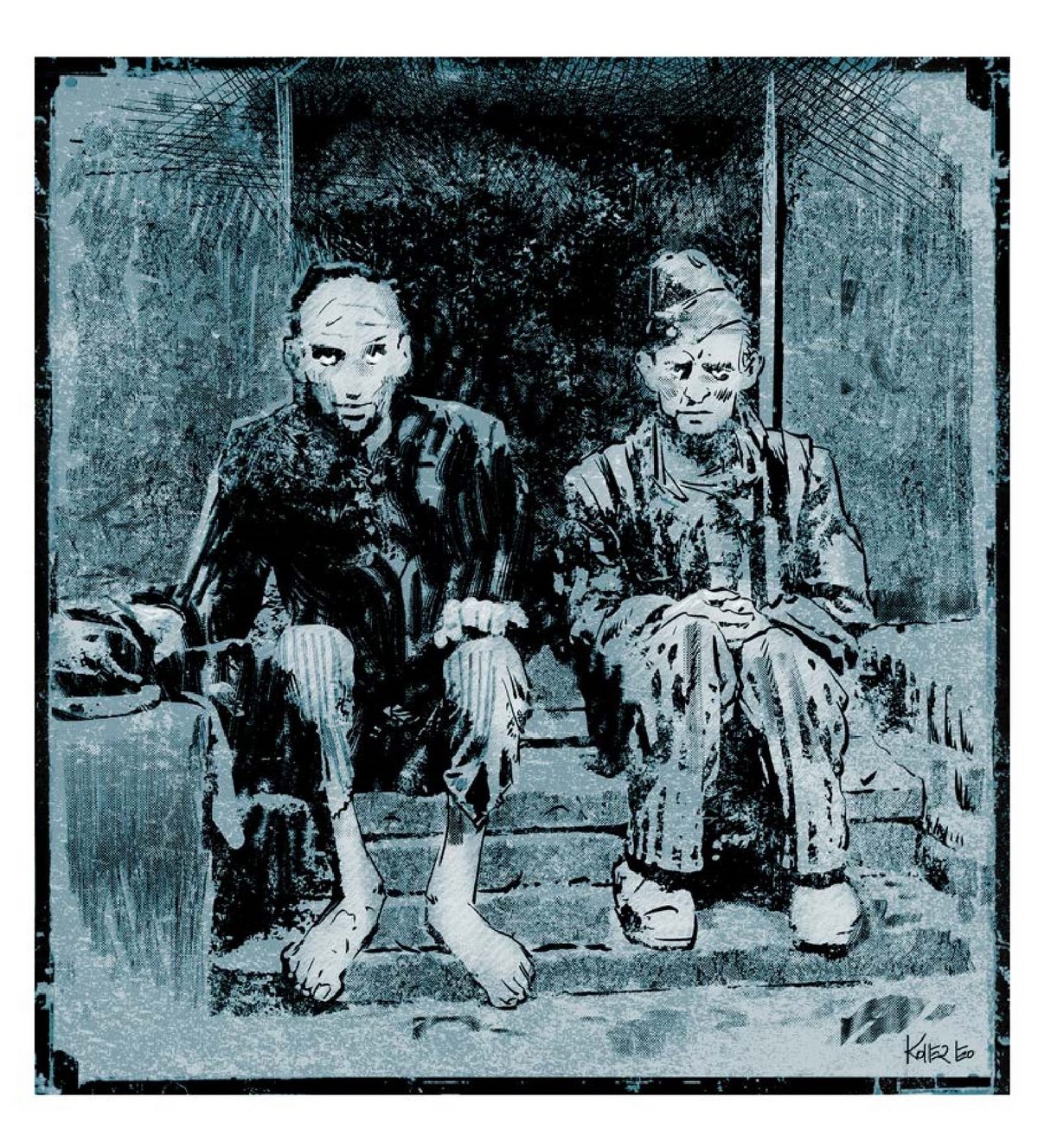
Karl Fiebinger is born in Vienna in 1913 as an only child. His childhood and adolescence take place at the time of the First World War, the end of the Habsburg monarchy in 1918 and the emergence of the first democratic Republic of Austria.
Fiebinger studies at the Vienna University of Technology from 1931. He specialises in tunnelling and underground construction.
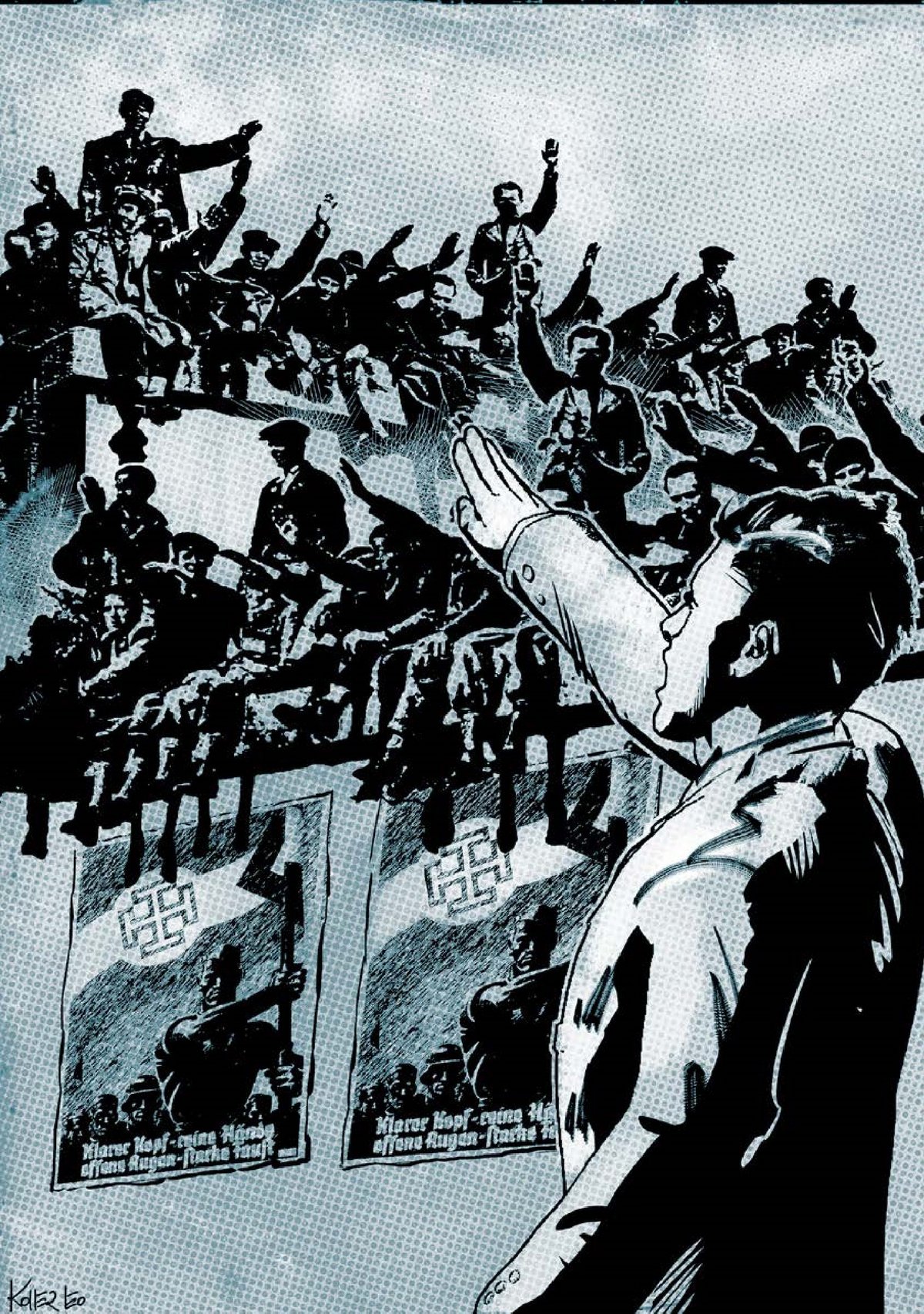
He is 20 when democracy in Austria comes to an early end in 1933. The Christian Social government under Engelbert Dollfuß shuts down parliament. In 1934, the Christian Socialists defeat the resistance of Social Democrats and Communists in a short civil war and establish a dictatorship. This is known as the ‘Christian Ständestaat’ and is supported by the Catholic Church. The Christian Socialists found a fascist unity movement, the Fatherland Front. All other parties, including the National Socialists, are banned. In 1935, Fiebinger joins the Fatherland Front.
Three years later, the Christian Socialist ‘Ständestaat’ collapses under pressure from Nazi Germany and the Austrian Nazis. When German troops invade Austria in March 1938, they are greeted with cheers from the masses. Many Austrians are proud of the fact that – following the ‘Anschluss’ (annexation) – they are now part of the German Reich.
During this time, Fiebinger completes his studies. A former professor provides him with his first orders from the German arms industry. This lays the foundation for his future career. Politically, Fiebinger becomes closer to the Nazis.
In 1939, he founds his own ‘Office for Construction’ in Vienna. In the course of the Second World War, he rises to become one of the most important engineers in the German arms industry. Thanks to his connections to leading Nazi officials, Fiebinger is awarded increasingly large contracts by the SS.
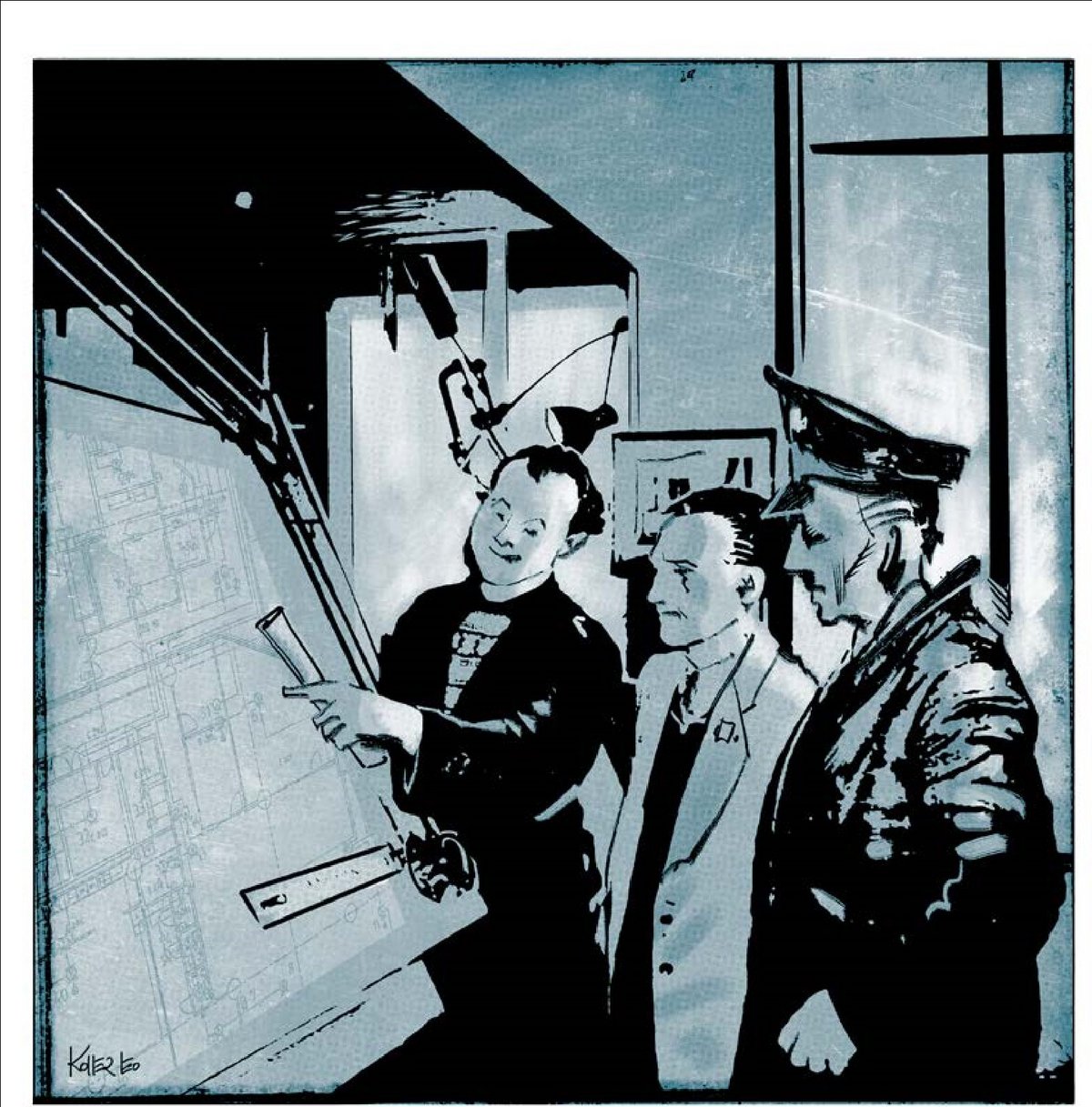
During the Second World War, arms factories in the German Reich are bombed on a massive scale. The German defence industry therefore wants to produce some of the arms underground. Fiebinger’s expertise in tunnelling and underground construction is particularly in demand. From 1943, he works closely with Hans Kammler, an architect and SS general responsible for expanding the underground production facilities. Kammler is also tasked with the supervision of buildings in concentration camps, including gas chambers and crematoria.
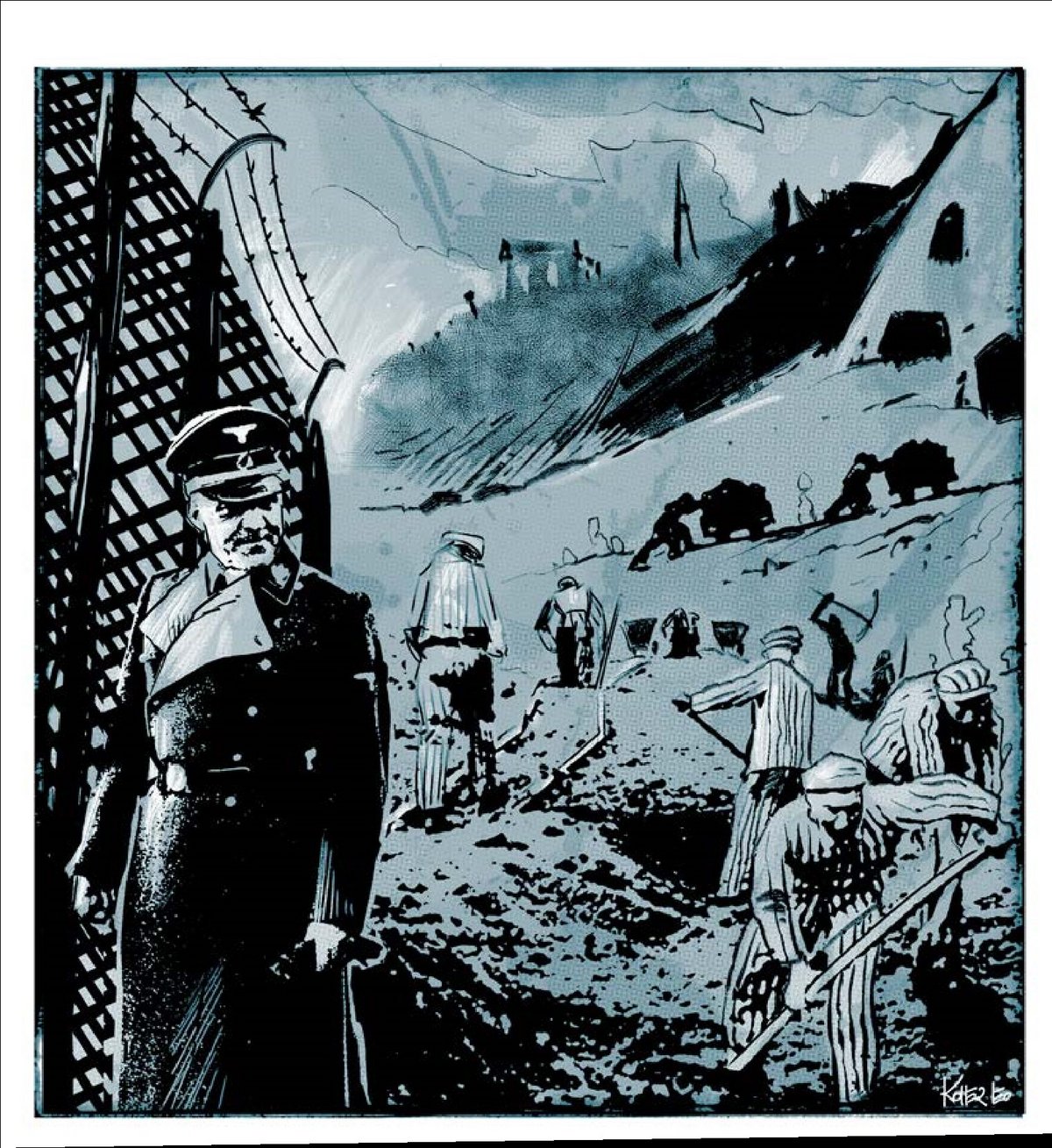
In 1944, Karl Fiebinger’s career takes him to St. Georgen an der Gusen. Prisoners at Gusen concentration camp have to build an underground aircraft factory for jet fighters. The factory has the codename ‘Bergkristall’. Fiebinger is a planner and construction manager. He and his staff move into their own barracks near the construction site. Whenever they look out their barrack windows, they can see the suffering of the prisoners with their own eyes.
Fiebinger travels a lot to supervise his construction projects, in the Melk and Ebensee concentration camps, and throughout the German Reich. He therefore employs some engineers from the surrounding area to supervise work at the ‘Bergkristall’ construction site during his absence. Fiebinger probably has little direct contact with the prisoners, but he sees them regularly. He accepts their deaths. In the course of working on the ‘Bergkristall’ tunnel system, thousands of prisoners die from exhaustion, disease or at the hands of the guards, who beat them on a daily basis.
A few months after the end of the Second World War, Karl Fiebinger is arrested by American soldiers and transferred to the Glasenbach camp near Salzburg. The Americans are holding leading Nazis prisoner at the camp. Some of them are later tried and convicted. The majority of them are released from the camp after a short time. One year after he is arrested, Fiebinger is also released. But he is not allowed to leave Salzburg.
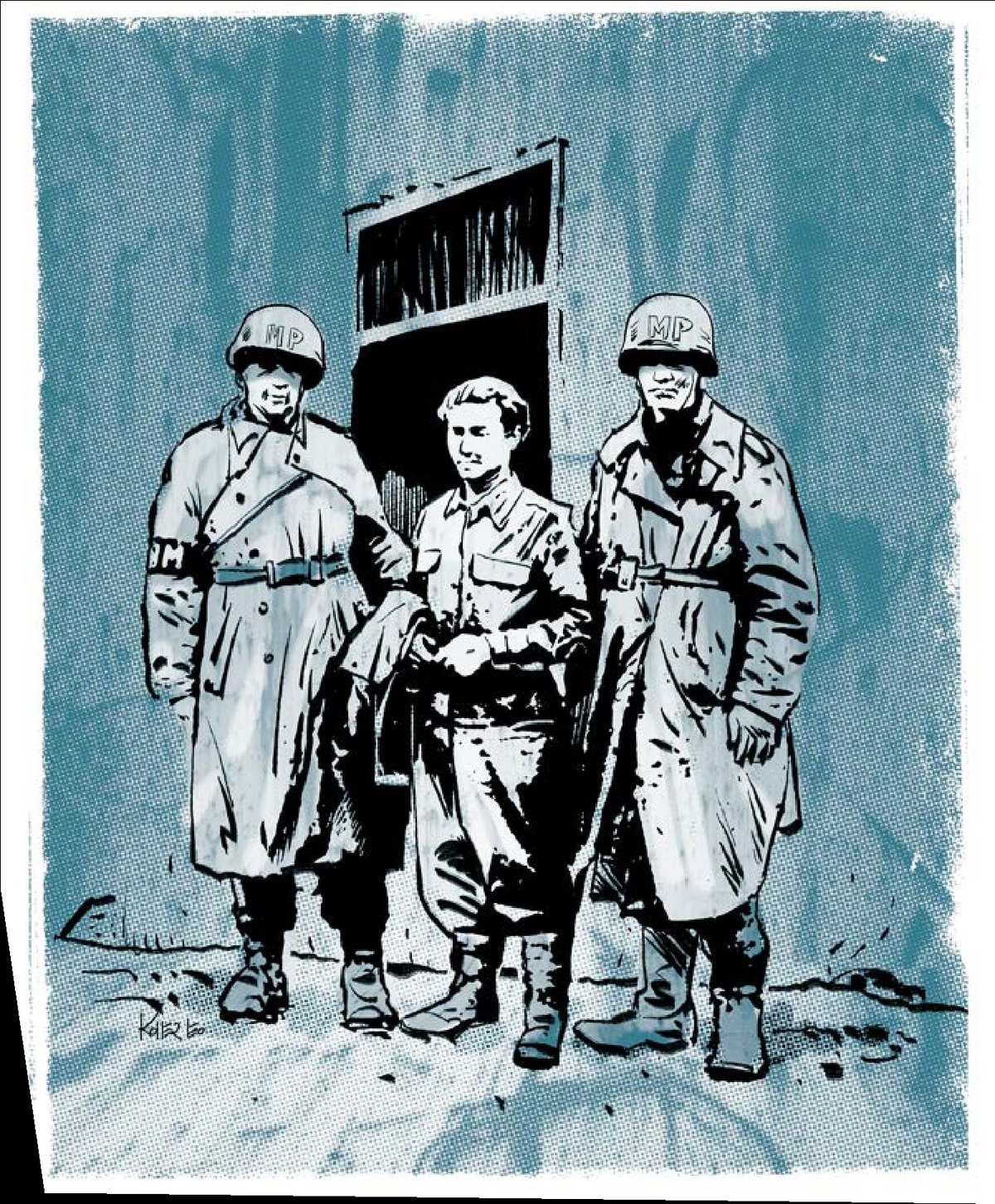
In 1948, Fiebinger is taken to the USA with about 500 other scientists and engineers as part of Operation Paperclip. This operation is a secret US military project to harness the expertise of German scientists for its own military interests. The USA wants to gain an advantage in the Cold War, i.e. in the struggle with the Soviet Union for global military supremacy.
For Karl Fiebinger, this means that he is protected from further criminal prosecution. In the following years, he works for the US War Department and for an engineering firm in New York. After some time, Fiebinger is able to found his own company in the USA, which he calls Austrobau.
In the final years of his life, Fiebinger and his wife Herta move back to his native Austria. In Vienna, he regularly meets at a wine tavern with some of his former employees from the Nazi era for what they call ‘Bergkristall meet-ups’.
Karl Fiebinger dies in Vienna in 2014 at the age of 101.
- 1913 Karl Fiebinger is born in Vienna
- 1914 28 July, start of the First World War
- 1918 11 November, end of the First World War
- 1931 He begins his studies at the Vienna University of Technology
- 1933 30 January, Adolf Hitler becomes Reich Chancellor in Germany
- In March, the Christian Social government shuts down the Austrian parliament
- In May – The ‘Austrofascist’ Fatherland Front is founded in Austria
- 1935 Fiebinger joins the "Fatherland Front" (Vaterländische Front)
- Fiebinger completes his studies
- 1938 12 March, ‘Anschluss’ (‘Annexation’) of Austria to Nazi Germany
- 8 August, construction starts on the Mauthausen concentration camp
- 1939 Fiebinger founds a construction firm
- 1 September, start of the Second World War
- December, Construction begins on the Gusen concentration camp
- 1943 Fiebinger begins working with Hans Kammler
- 1944 He is a planner and construction manager of the underground aircraft plant "Bergkristall" in St. Georgen an der Gusen
- 1945 5 May, Mauthausen concentration camp is liberated by the US Army
- 8 May, Nazi Germany surrenders; end of the Second World War in Europe
- Fiebinger is arrested by US soldiers
- 1946 Fiebinger is released
- 1948 „Operation Paperclip“, work for the U.S. War Department; Fiebinger later founds his own company
- 2014 Karl Fiebinger dies in Vienna
Further reflection in groups...
After completing his training, Karl Fiebinger mainly takes on contracts from the Nazis. What could be the reasons for this?
As part of Fiebinger’s work in the concentration camp, contact with the prisoners is unavoidable. Karl Fiebinger is confronted with great suffering and violence. How does he react to these experiences?
The prisoners in the concentration camps have to carry out forced labour. Even today, forced labour is common in many countries around the world. What do you understand by forced labour?
The drawings in the biography depict important moments in the life of Karl Fiebinger. Look closely at the drawings. Imagine you have the opportunity to ask Karl Fiebinger questions. What would you like to know from him?